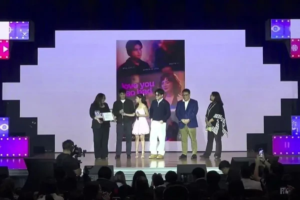Textile conservationist and cultural advocate Raffy Tesoro tests the supply chain he has set in place with a series of dinners, hopefully sparking a conversation on how challenges in agriculture and logistics affect our cultural heritage, including Filipino cuisine
To Raffy Tesoro, all things Filipiniana come as second nature. When asked about anything pertaining to Filipino culture, it flows through his veins–the knowledge gushes out of him like water from a forest spring. He can’t help it, it’s in his blood. On his father’s side, he is heir-apparent to the Tesoro’s brand— the long-trusted purveyor of Filipino-made handicrafts sourced from all over the country from only the best artisans in the trade. His mother is Patis Tesoro, who, in Raffy’s own words, is “a generational artist”. The renowned fashion designer, who is not only a revered name in fashion but also an authority on Philippine cultural heritage, is reviving traditional fabrics like piña and the design of the baro’t says.
The immersion seems to have made an impact on the younger Tesoro, whose passions run along the same vein. He has made it his personal mission not only to continue his mother’s legacy but to also address the ails that afflict our country, which in turn are making cultural preservation problematic. Raffy has had to refuse lucrative textile partnerships abroad because our local supplies prove to be erratic and unreliable. To address this, he believed he needed to go to the root of the supply problem and made his way to the countryside. There, Raffy established connections with farmers, not just those supplying textiles, but also the ones who cultivated our food. “It was inevitable,” he said. “Food and fashion are truly intertwined.”
See also: Ramen 101: your ultimate guide to ramen, from broth to noodles and more
In terms of food supply, the obstacles farmers face, especially those in smaller farms in remote areas, are many and persistent–thorns in the country’s side. “Why do you think the younger generations do not know what real Filipino food is?” Raffy asks. “For one, whatever happened to the older Filipino restaurants, the bastions of Filipino cooking? Many have closed down, and those that are left are merely a shell of their former selves. Perhaps because the original owners and cooks have passed, and the children are not as impassioned in preserving their heirloom recipes. One big reason for this is also the availability of ingredients, or rather the lack of it.”
In his quest to find a lasting solution to our agriculture sector’s long-standing problems, Raffy began to work with a network of farmers, market vendors, manufacturers, logistics providers, among many other important players, to build a working and reliable supply chain. For proof of concept, he established a market, currently the Philippine Transmarine Carriers office in Bagtikan Street, Makati. He worked with their CSR and agricultural divisions to make the market happen–now, it is only open to their employees and is part of their benefit program. “We are talking to nine other companies and locations to set up shop with the same approach of employee benefits, CSR integration, and food security,” Raffy explains. The market offers mostly produce from Southern Tagalog, such as vegetables, longganisa, kesong puti, as well as other regional products from suppliers introduced to them by provincial organisations.
See also: Maido in Lima crowned World’s Best Restaurant 2025 as Asia shines with 14 entries











